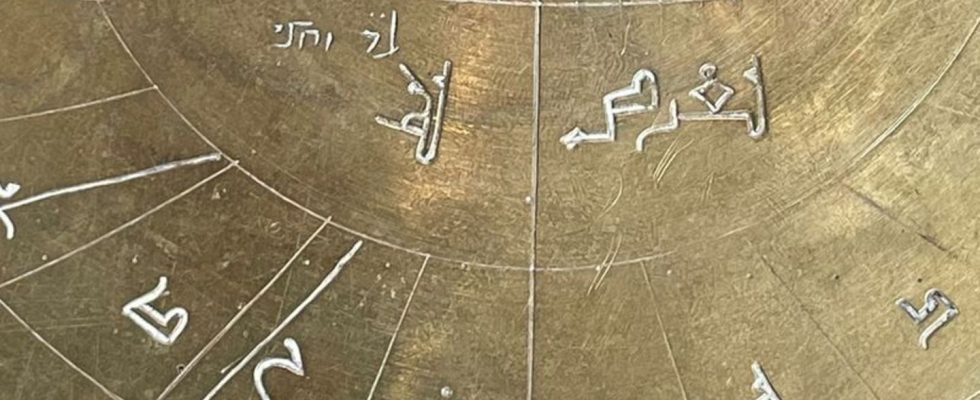Around 1000 years old
Ancient astrolabe shows Islamic-Jewish exchange
An astrolabe that is around 1,000 years old has engravings in Arabic and Hebrew script, as well as carved numbers that indicate the use of the Latin script. photo
© Federica Gigante/dpa
The astronomical device was used by Muslim, Jewish and Christian users for centuries. This is seen as a testimony to the relationships between Arabs, Jews and Europeans.
An approximately 1,000-year-old astrolabe has engravings in Arabic and Hebrew script, as well as carved numbers that indicate the use of the Latin script. “It is an impressive testimony to the scientific exchange between Arabs, Jews and Christians over hundreds of years,” says historian Federica Gigante from the British University of Cambridge, who examined the astronomical device.
For example, astrolabes can be used to read star positions for a specific date and time. They have been important instruments for astronomers, surveyors and sailors for many centuries. The astrolabe now described in the study belongs to the holdings of the Fondazione Museo Miniscalchi-Erizzo in Verona (Italy).
After the museum posted a new photo of the device online, historian Gigante became aware of it. “When I visited the museum and looked at the astrolabe up close, I noticed that not only was it covered with beautifully engraved Arabic inscriptions, but I could also see faint Hebrew inscriptions,” Gigante said.
Constantly developed and adapted
Based on the engravings, she was able to trace the origin and use in Spain, North Africa and Italy. “The Verona astrolabe underwent many changes, additions and adjustments when it changed hands,” said the historian. “At least three different users felt compelled to make translations and corrections to this item, two in Hebrew and one in a Western language.” Gigante’s study was published in the specialist journal “Nuncius”.
Since the visible star positions change slightly over the centuries, the historian was able to date the device’s manufacture to the 11th century. In addition, it has great similarities to astrolabes that the mathematician Ibrahim Ibn Saîd al-Sahlì made in the 11th century in Toledo in al-Andalus, the then Muslim-dominated area of Spain.
Toledo and Cordoba, also located in al-Andalus, are engraved with their latitudes on the front and back, respectively. Gigante suggests that the astrolabe may have been made in Toledo at a time when the city was a thriving center of coexistence and cultural exchange between Muslims, Jews and Christians.
From North Africa via Spain to Italy?
Later than the original Arabic inscriptions – which include Islamic prayer times – the names Isḥāq and Yūnus were engraved; it is the Arabic spelling of the biblical names Isaac and Jonah. Gigante speculates that this engraving was made by a member of Sephardic Jews in Spain, as the Arabic language was common among them.
A second, added plate is inscribed with typical North African latitudes, suggesting that the object may have been used in Morocco or Egypt at another time in its existence.
More than one hand also added Hebrew inscriptions to the astrolabe. “These Hebrew additions and translations suggest that at some point the object left Spain or North Africa and circulated in the Jewish diaspora community in Italy, where Arabic was not understood and Hebrew was used instead,” explains Gigante.

